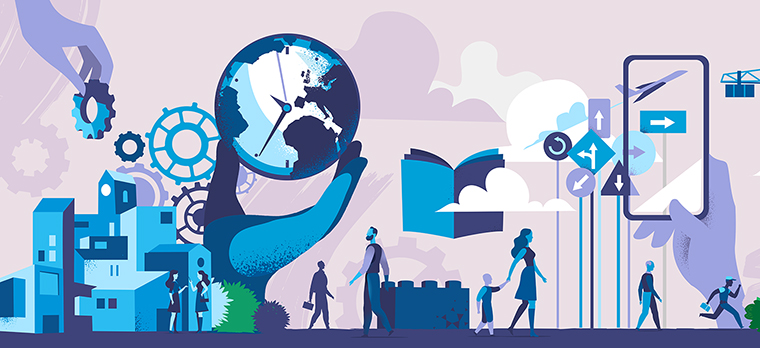What do we need to do today to be resilient and relevant in the future?

A company’s capability to adapt to different macro forces and renew or invent matching business and operational models has defined contemporary business success for decades. In the 1950s it was franchising; in the 1960s hypermarkets; in the late 1970s and far into the 1980s we rode a wave of new digital technology; in the 1990s it was the global sourcing of product manufacturing and in the 2000s outsourcing and offshoring. Over the last decade, we have seen platform and SaaS business models and innovation culture make their way into the mainstream.
But what about the future: What are some of the new approaches and models we need to start adopting now so that we will be successful also in 2030? Moving forward, companies will need to adapt to the scarcity of talent, accelerated automation, government regulations and consumer demands towards more sustainable business, not to mention the technological progress in the cloud, AI, quantum, and the ubiquity of data. The four key steps to do this are:
- Apply everything you know about customer experience to employee engagement
- Harness technology for operating and business model change
- Build new offerings and scale through ecosystems
- Find a balance between focusing and building options for the future
Apply everything you know about customer experience to employee engagement
As consumers, we have become used to effortless and engaging user experiences in everything we do from online shopping and banking to social media. In recent years forerunner companies have started to also organise themselves based on value streams to improve their ability to serve customers. As automation replaces many repetitive jobs and there is a scarcity of talent for new, more complex jobs, companies need to move beyond their customers to better serve their own people to keep them engaged and eager to learn.
The entire employee experience must be reinvented. We must develop a deeper understanding of who our employees are, what motivates them to do their best, and how we can support them. From effortless, meaningful, and engaging experiences–whether it is career progression, onboarding, or daily workflows–winning companies put their employees first.
Harness technology for operating and business model change
Technology has long been a central factor in offering organisations a competitive advantage. Unfortunately, it is often only applied to existing processes, operations, and business models, resulting in a modest business impact. To achieve a bigger impact, companies need to reconsider their whole operating model. There are numerous industries where the fundamental operating model has remained the same for decades even though both the business environment and technical capabilities have enabled and even called for a fundamental renewal.
It is important to keep in mind that this is not a technical exercise. Technology enables the change, but a bigger change is required on the level of processes and people. It involves re-imagining ways of working, redesigning processes and breaking old mental models.
Build new offerings and scale through ecosystems
Business ecosystems offer the ability to co-create, build business, and shape whole industries together. It is a form of a governance model that involves independent entities joining forces to build new offerings. This approach provides significant benefits including efficient scaling and bringing together capabilities across industries.
What are the capabilities required to harness the business ecosystem? One of the key enablers is culture. A key aspect is the ability to move beyond traditional supplier–vendor power relationships into co-creation thinking. Instead of dividing the cake, we must look to baking bigger cakes.
Find a balance between focusing and building options for the future
We all know that the future is uncertain thanks to rapid changes in areas like technology, business models, sustainability and, generally, innovation. Even in very traditional industries, we have witnessed how the tech-driven operating model transformation opens multiple strategic options. As a result, we need to prepare for many different future scenarios. However, a company only has a limited number of resources and spreading those too wide and thin will not move the needle.
The best leaders will master the paradox of setting a renewal agenda that brings coherence and flexibility while making investment decisions that have both business relevance in the short term and open future options.
Leadership–taking ownership of new areas
Traditionally, topics related to employee experience have been delegated to HR and technological ones to CTOs, CIOs, CDOs, etcetera. Too few top leaders, CEOs and boards really take ownership of both the employee experience and the technology-enabled operating and business model change. The holistic nature of both requires full ownership across the different processes and functions–especially when they are being renewed. Leaders, step up and take that ownership!
The full version of this article was published in Boardview magazine 2/2021.


